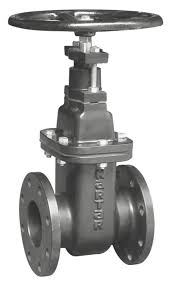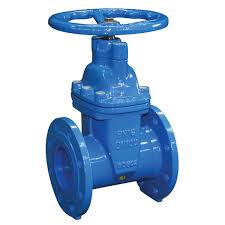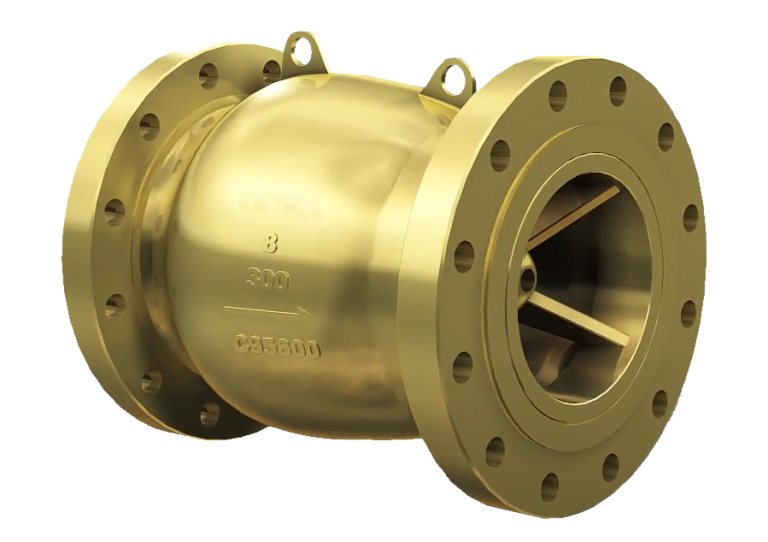Gate Valve Flange Type 8 Inch 300 LB API 600

The Application of Gate Valve Flange Type
The application of Gate Valve Flange Type is crucial in various industrial settings. Cameron, a renowned manufacturer, offers a wide range of gate valve flange types to cater to diverse needs. The 3 Inch Gate Valve Flange Type is a popular choice for medium-sized piping systems, providing reliable isolation and flow control. The selection of the appropriate Gate Valve Flange Type depends on factors such as pressure, temperature, and material compatibility. Gate Valve Flange Type Price List can help engineers and procurement teams make informed decisions when specifying valves for their projects. Regardless of the size or application, the right Gate Valve Flange Type ensures the safe and efficient operation of the overall system.
What Are The Types Of Gate Valve Flange Type?
Raised Face (RF) Flange: This is a common flange type for gate valves, featuring a raised, flat face that provides a secure sealing surface for the mating flange. RF flanges are designed to compress a gasket between the two flanges, creating a tight seal.
Flat Face (FF) Flange: Flat face flanges have a smooth, flat surface without any raised features. They are often used in applications where space is limited, as the FF design has a smaller overall envelope.
Ring Type Joint (RTJ) Flange: RTJ flanges incorporate a grooved profile that holds a metal ring gasket. This flange type is commonly used in high-pressure, high-temperature applications that require a robust, metal-to-metal seal.
Tongue and Groove (T&G) Flange: The T&G flange design features a tongue that fits into a corresponding groove on the mating flange. This interlocking mechanism helps to align the flanges and prevent lateral movement.
Socket Weld Flange: Socket weld flanges are designed to be welded directly to the pipe, eliminating the need for separate pipe fittings. This can simplify installation and reduce potential leak points.
What Is Gate Valve Flange Type?
Gate Valve Flange Type refers to the style and configuration of the flanges used to connect a gate valve to the surrounding piping system. The flange type determines the mating interface, sealing method, and overall installation requirements of the valve. Common flange types for gate valves include Raised Face (RF), Flat Face (FF), Ring Type Joint (RTJ), and Socket Weld. The selected Gate Valve Flange Type must be compatible with the piping system, pressure and temperature conditions, and any applicable industry standards to ensure a secure, leak-free connection and reliable valve operation.
How to Select the Right Gate Valve Flange Type?
- System Pressure and Temperature: Evaluate the maximum pressure and temperature ratings of the piping system to determine the suitable flange type. Higher-pressure applications may require a Ring Type Joint (RTJ) flange, while lower-pressure systems may accommodate a Raised Face (RF) or Flat Face (FF) flange.
- Corrosion and Chemical Resistance: Consider the fluid media and operating environment to select a flange material that is compatible and resistant to corrosion or chemical attack.
- Flange Sizing and Compatibility: Ensure the gate valve’s flange dimensions, bolt patterns, and facing profile match the corresponding flange specifications of the piping system.
- Installation and Space Constraints: Assess the available space and accessibility within the piping layout to determine if a compact Flat Face (FF) or socket weld flange would be more suitable than a larger Raised Face (RF) flange.
- Industry Standards and Regulations: Refer to relevant industry standards, such as ASME B16.5 or API 6D, to ensure the selected Gate Valve Flange Type meets the necessary code requirements for the application.
Features of Gate Valve Flange Type
Sealing Mechanism:
The flange type determines the sealing mechanism used to create a tight connection between the valve and the piping system. Raised Face (RF) flanges utilize a compressed gasket, while Ring Type Joint (RTJ) flanges rely on a metal-to-metal seal.
Pressure and Temperature Ratings:
Different flange types are designed to withstand varying pressure and temperature conditions. For example, RTJ flanges are typically used in high-pressure, high-temperature applications.
Installation Considerations:
The flange design can impact the ease of installation and the overall footprint of the valve. Flat Face (FF) flanges may be more suitable in confined spaces compared to larger Raised Face (RF) flanges.
Material Compatibility:
The flange material must be compatible with the fluid media and operating environment to prevent corrosion or chemical degradation, ensuring the long-term integrity of the valve connection.
Industry Standards:
Gate valve flange types often adhere to established industry standards, such as ASME B16.5 or API 6D, to ensure consistent quality and performance across different valve manufacturers.
Advantages and Disadvantages of Gate Valve Flange Type
Advantages of Gate Valve Flange Type:
- Secure Connections: The flange design provides a robust, leak-proof connection between the gate valve and the piping system, ensuring reliable isolation and flow control.
- Adaptability: Different flange types, such as Raised Face (RF) or Ring Type Joint (RTJ), allow for flexibility in accommodating various pressure, temperature, and installation requirements.
- Standardization: Gate valve flange types often adhere to industry standards, facilitating interchangeability and compatibility with other system components.
- Ease of Maintenance: The flanged connection allows for easier disassembly and maintenance of the gate valve compared to other connection methods.
Disadvantages of Gate Valve Flange Type:
- Space Requirements: Certain flange types, like Raised Face (RF), may have a larger envelope and require more space for installation compared to more compact options, such as Flat Face (FF) or socket weld flanges.
- Potential Leak Points: The flange connection introduces an additional potential leak path that must be properly sealed and maintained to prevent fluid or gas leakage.
- Cost: The use of flanges and the associated hardware (e.g., bolts, gaskets) can increase the overall cost of the gate valve assembly compared to other connection methods.
- Weight: Flanged gate valves may be heavier than their counterparts with alternative connection types, which can impact handling and installation requirements.

The Specifications of Gate Valve Flange Type
| Specification | Details |
|---|---|
| Type | Gate Valve |
| Ball Material | Stainless Steel 316 |
| Attachment Type | Flanged |
| Thread Standard | ANSI B1.20.1 |
| Thread Size | 2 inch |
| Body Material | Carbon Steel |
| Safe for Use With | Water, Oil, Gas |
| Handle Type | Handwheel |
| Handle Material | Carbon Steel |
| Maximum Working Pressure (psi) | 300 psi |
| Maximum Working Pressure (bar) | 20.7 bar |
| Operating Pressure | 200 psi (13.8 bar) |
The Installation Steps for Gate Valve Flange Type
- Prepare the Pipe Ends: Ensure the pipe ends are properly cut, deburred, and cleaned to provide a smooth and even mating surface for the flange connections.
- Select Appropriate Gaskets: Choose the correct gasket material and dimensions that are compatible with the flange type, pressure, and temperature requirements of the application.
- Position the Gate Valve: Place the gate valve in the desired location within the piping system, taking into account the flow direction and accessibility for future maintenance.
- Align the Flanges: Carefully align the gate valve’s flanges with the corresponding flanges on the adjacent piping, ensuring the bolt hole patterns are properly matched.
- Install Flange Bolts: Insert the flange bolts through the bolt holes and hand-tighten them in a star or criss-cross pattern to ensure even distribution of the clamping force.
- Torque the Bolts: Using a calibrated torque wrench, tighten the flange bolts to the recommended torque values specified by the valve manufacturer or industry standards.
- Perform Leak Testing: Once the gate valve is installed, conduct a thorough leak test using an appropriate method, such as a pressurized air or liquid test, to verify the integrity of the flange connections.
- Operate the Valve: Carefully open and close the gate valve to ensure smooth operation and no binding or interference within the piping system.
- Document the Installation: Record the installation details, including the flange type, gasket specifications, and bolt torque values, for future reference and maintenance purposes.
The Operation Theory of Gate Valve Flange Type
Operation Theory of Gate Valve Flange Type:
- Sealing Mechanism: Flange-type gate valves rely on a sealing gasket or metal-to-metal contact to create a tight seal between the valve body and the flanged pipe connections. The choice of flange type, such as Raised Face (RF) or Ring Type Joint (RTJ), determines the specific sealing mechanism.
- Valve Actuation: Gate valves are typically operated by a handwheel or other manual actuator that rotates a threaded stem, causing the gate to rise and lower to control the flow.
- Flow Control: When the gate is in the open position, the flow path through the valve is unobstructed, allowing for full flow capacity. When closed, the gate creates a tight seal, completely shutting off the flow.
Considerations for Brass Gate Valve Flange Type:
- Corrosion Resistance: Brass is a more corrosion-resistant material compared to carbon steel, making it suitable for applications with mildly corrosive fluids or environments.
- Lower Pressure Ratings: Brass gate valves generally have lower pressure ratings than their steel counterparts, typically up to 400 psi (27.6 bar).
- Thermal Expansion: The thermal expansion coefficient of brass is higher than that of steel, which may need to be considered in applications with significant temperature fluctuations.
Considerations for China Flange Type Gate Valves:
- Manufacturing Standards: China-made gate valves may adhere to different industry standards or have varying quality control processes compared to valves produced in other countries.
- Material Composition: The specific material composition of the valve components, such as the body, gate, and seals, should be verified to ensure compatibility with the intended application.
- Durability and Reliability: There may be differences in the long-term durability and reliability of China-made gate valves compared to those produced in more established manufacturing centers.
